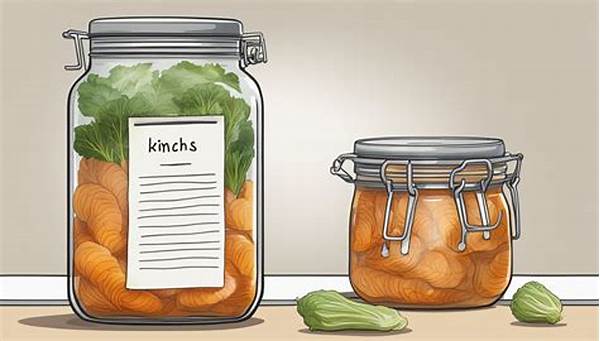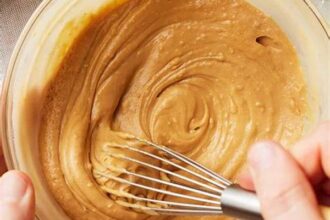Yo yo yo, what’s good, folks? If you’re into that tasty Korean delight known as kimchi, then you know it’s all about keeping it fresh and funky. Whether you’re a newbie just getting started or a kimchi connoisseur, mastering the kimchi storage techniques is a must. So, let’s dive into the world of kimchi and get schooled on how to keep your kimchi game strong!
The Basics of Kimchi Storage Techniques
Alright, let’s break it down. Storing kimchi ain’t rocket science, but there are some things you gotta know to keep that flavor on point. First off, kimchi is like that friend who’s always evolving, and it’s gonna ferment over time. To control that fermentation, chill it in the fridge. Ideal temps? We’re talking between 1°C and 4°C. Lower temps slow down the fermentation, so your kimchi stays crisp and tangy without going overboard.
Now, air is kimchi’s arch-nemesis when it comes to storage. You wanna make sure your kimchi is snugly packed in an airtight container. This not only keeps out unwanted bacteria but also holds in that precious, signature aroma. Nobody needs a fridge that smells like a kimchi explosion – unless that’s your vibe, of course. So, remember, tight seal, no mess, more blessings.
Lastly, let’s talk about the secret weapon: brine. You gotta keep your kimchi submerged in its own spicy bath. This ensures the magic fermentation continues as planned and keeps your cabbage crispy and spicy. So, next time you store your kimchi, hook it up with that liquid gold and thank me later!
Top Tips for Kimchi Storage Techniques
1. Chill It Properly: Always refrigerate your kimchi to keep it fresh and crunchy for the long haul. The cooler, the better for optimal kimchi storage techniques.
2. Invest in Airtight Containers: Make sure those lids are on tight! This stops the fermentation odors from escaping and keeps your kimchi at its best.
3. Leave Some Head Space: Leave a little room at the top of your container. Kimchi can expand while fermenting as part of kimchi storage techniques.
4. Keep it Clean: Use clean utensils when grabbing your kimchi to avoid unwanted contamination. Proper kimchi storage techniques start with cleanliness.
5. Monitor the Fermentation: Check those dates. Kimchi stored longer will get sourer, which might be your jam—or not. Adjust your kimchi storage techniques accordingly.
Understanding the Kimchi Fermentation Process
Fermentation is like a wild party for your taste buds, and controlling it is key. With the right kimchi storage techniques, you can decide how funky you want your kimchi to get. Need something fresh for your Bibimbap tomorrow? Keep that bad boy in cooler temps for a milder tang. Want something aged and intense? Let it chill longer and enjoy the explosion of flavors.
The fermentation process isn’t just a one-and-done deal; it’s ongoing. This means every day is a new adventure for your kimchi. Just like a rad playlist, the taste profile ebbs and flows, giving you something fresh with each bite. Tuning into your kimchi’s unique vibe will help you become the maestro of kimchi storage techniques.
Common Mistakes with Kimchi Storage Techniques
1. Not Using Airtight Containers: Leads to faster fermentation and unwanted odors. Lesson: invest in that tight seal friend.
2. Ignoring the Brine: Avoid bone-dry kimchi by keeping it soaked. Moisture is key in kimchi storage techniques.
3. Forgetting to Date Your Batch: You might end up with a mystery jar. Always mark the date to master your kimchi storage techniques.
4. Overcrowding the Fridge: Keep space so your kimchi isn’t getting squashed. Happy kimchi needs room to breathe even if sealed tight.
5. Using Metal Containers: Acidic kimchi and metal aren’t BFFs in kimchi storage techniques. Stick to glass or plastic, fam.
6. Exposure to Light: Kimchi and sunlight don’t mix. Keep it in the dark for the best outcome.
7. Too Warm: Warm storage speeds up fermentation. Stay cool, kimchi warrior.
8. Using Dirty Utensils: contamination is a no-no. Clean tools equal fresher kimchi.
9. Ignoring Texture Changes: Kimchi evolves: crisp becomes soft. Roll with it using proper kimchi storage techniques.
10. Discarding Liquid: That’s flavor loss. Retain as much of that brine as possible in your storage process.
How Long Can You Store Your Kimchi?
Now for the golden question: How long can you store it? Well, depending on kimchi storage techniques, it can last from a few weeks to several months. If you’re keeping it sealed and in the right conditions, it’ll stay edible and tasty for quite a while. It just gets more intense over time, like a slow-burn drama series, but in the form of spicy cabbage.
Remember, older kimchi doesn’t mean bad kimchi. Aged kimchi is perfect for cooking. Think soups, stews, or a banging Korean pancake. The flavors evolve to give your dishes that deep richness without any extra hassle. So, you do you, and let those kimchi storage techniques do their thing!
Balancing Taste with Kimchi Storage Techniques
Alright, so you know all the tricks now, but how do you decide what’s best for your tastebuds? It’s all about balance. Experiment with time and temperature. Want it mild? Eat it sooner. Crave that deep robust tang? Wait it out and let the fermentation work its magic. It’s an art and science mashup, folks!
With these kimchi storage techniques, you’re not just preserving a side dish. You’re creating a dynamic flavor profile that changes with your storage methods. Once you find your perfect spot on the sourness scale, your kimchi will be an absolute superstar in your culinary lineup. So, get creative, and happy fermenting!
Wrapping Up Kimchi Storage Techniques
So, to sum it up, kimchi storage techniques are about finding that finesse in flavor, sealing out air, and keeping your chill in check. Your homemade or store-bought kimchi will thank you for your efforts. With these strategies, that tangy delight can be the highlight of your kitchen for a long time.
Whether you’re gobbling it down fresh or letting it take its time to reach that hard-hitting pungency, these techniques will have you covered. So, embrace the journey, enjoy the taste evolution, and let your tastebuds celebrate through the world of kimchi storage techniques. Peace, love, and pickled vibes, fam!





